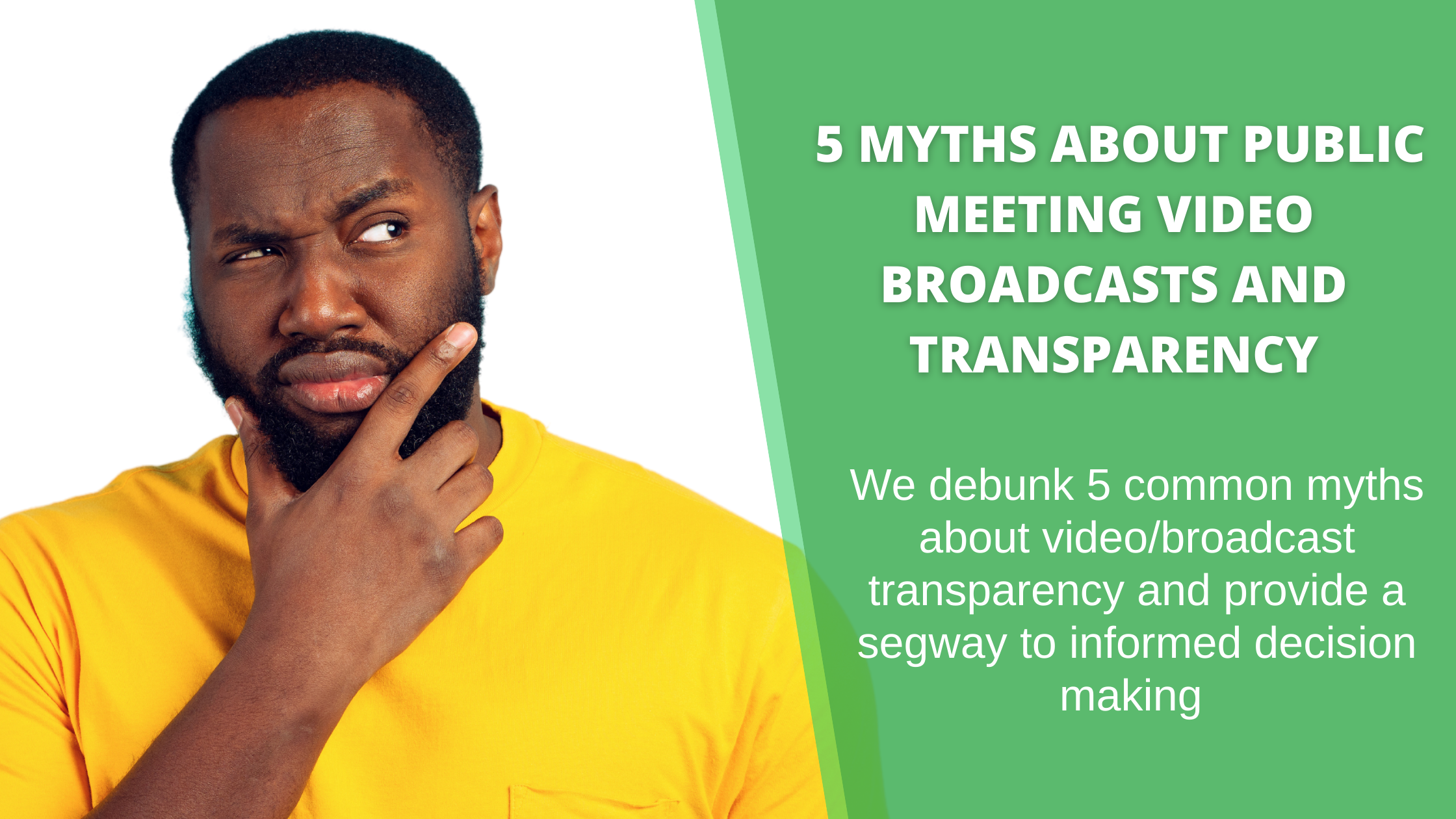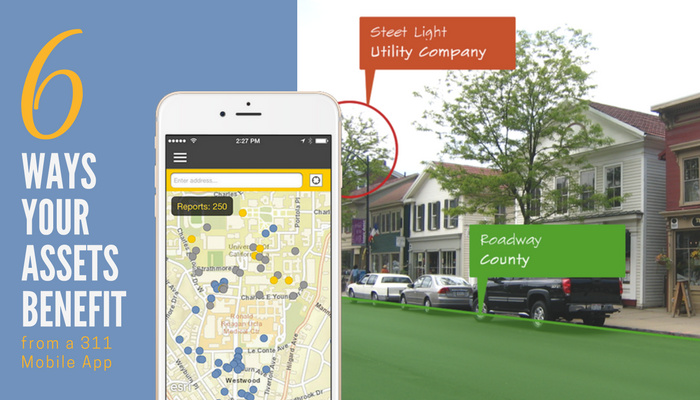Are you considering integrating public meeting webcasts into your public messaging services – or upgrading to a more advanced webcast system – but have heard warnings that raise your suspicions?
Here are some of the more common ‘myths’ about public meeting webcasts that could be hindering your strategic vision and goal of providing enhanced and accessible resident engagement, communication, and navigable public meeting video.
Let’s unpack the most common myths about public meeting webcasts beginning with the first myth: costliness.
Myth 1: “It costs too much, and we can’t afford it.”
The need and demand for public meeting transparency continue to rise, and residents have growing expectations for video content. Video is one of your best and easiest solutions to meet resident expectations. Constant advancement in video technology means there are now affordable and scalable solutions to fit an agency of any size and budget.
Budgeting for a critical service that ensures your agency meetings are accessible to every citizen is an investment that can be reasonably justified. Ultimately, it’s a service that is in the public’s best interest.

Myth 2: “It will lead to job loss.”
Moving forward in the same economic mindset, let’s say you’re budget conscious and expected to accomplish more with fewer resources. The last thing you want to do is cut staff – rather, you should allocate resources more effectively. When you’re considering video streaming, workforce downsizing is a common fear - but it’s only just that- a fear.
.png?width=293&name=Blog%20Data%20Graphic%20(39).png)
Whether your goal is to stream and caption your meetings for ADA compliance, to simplify recordkeeping with meeting transcripts, or to webcast with hands-free broadcast and streaming services – there are solutions to address the specific needs of most municipalities. These webcasting solutions can improve your workflow, giving staff additional time to focus on what is most important and empowering them to better serve their role.
Myth 3: “I’ll need to hire a crew of video and internet professionals.”
The reality of it is the local government sector is not the same as the news or entertainment industry. It doesn’t require quite the glamor, but instead the transparency of public meetings for your residents. With today’s advanced technology it can be simple and inexpensive too.
Your budget and resources ultimately determine how sophisticated your solution can be. For instance, you could record just the audio from your meetings and host those recordings on your website.
.png?width=345&name=Blog%20Data%20Graphic%20(43).png)
Or, for a fraction of what it would have cost twenty years ago, you could install a system of broadcast cameras, production and streaming equipment. Unlike twenty years ago, that equipment can now all be controlled by a single remote operator, and the video will be live-streamed, finished, indexed against your meeting agenda, and hosted for on-demand viewing by the same solutions service provider. A one-stop shop for all your video meeting needs.
Myth 4: “Video streaming is too complicated for our staff and our citizens."
Your staff and constituents already use mobile phones and computers, and citizens are more digitally and tech-savvy than ever before.
Years ago, most video streaming required a crew of professionals who maintained huge, dedicated broadcast systems, with cramped rooms full of racked heavy-duty equipment plus massive cameras, command-prompt software, and platform-specific video output.
.png?width=333&name=Blog%20Data%20Graphic%20(38).png)
Video meetings have matured into a platform-agnostic, modular, and user-friendly cloud-based internet culture.
The steep learning curve has vanished, and the process of meeting broadcast webcasting and recording has been streamlined. Meeting video can be as simple or as elaborate as you need it to be, from simple homegrown YouTube Live webcasts to full-fledged hands-free video streaming and broadcast production solutions.
Myth 5: “If we Livestream our meetings, the audience gallery will be empty.”
Open government meetings are a cornerstone of our democratic process, and residents who wish to actively participate in the government process will still attend in-person meetings. Video meetings simply fill the gaps for citizens that may not be able to attend the meetings due to scheduling conflicts.
The Open Public Meetings Act mandates that the public has a right to attend public meetings. It really shouldn’t matter whether those people occupy a chair in your gallery or a chair in their own living room, (just like remote work).
.png?width=322&name=Blog%20Data%20Graphic%20(40).png)
A city council’s job is to serve as a governing board – not provide a live theatre experience. Meeting accessibility for off-site and time-delayed constituents is critical for government to be truly transparent and provides an opportunity to exceed civic engagement.
So, there are the ‘myths’ about public meeting webcasts, explained and debunked. Video/ Live Streaming media is not too expensive, it won’t lead to job loss, it’s not too complicated, and it won’t lead to decreased live participation.
Bottom Line: Through video/live streaming, local government can improve transparency and help citizens and city staff alike become more informed and connected. This resource can help broaden an agency's internet presence and amplify resident engagement.
Do you have any more streaming myths for us to ‘bust’? Talk to the Swagit team and learn information about public meeting video broadcasts and transparency.


